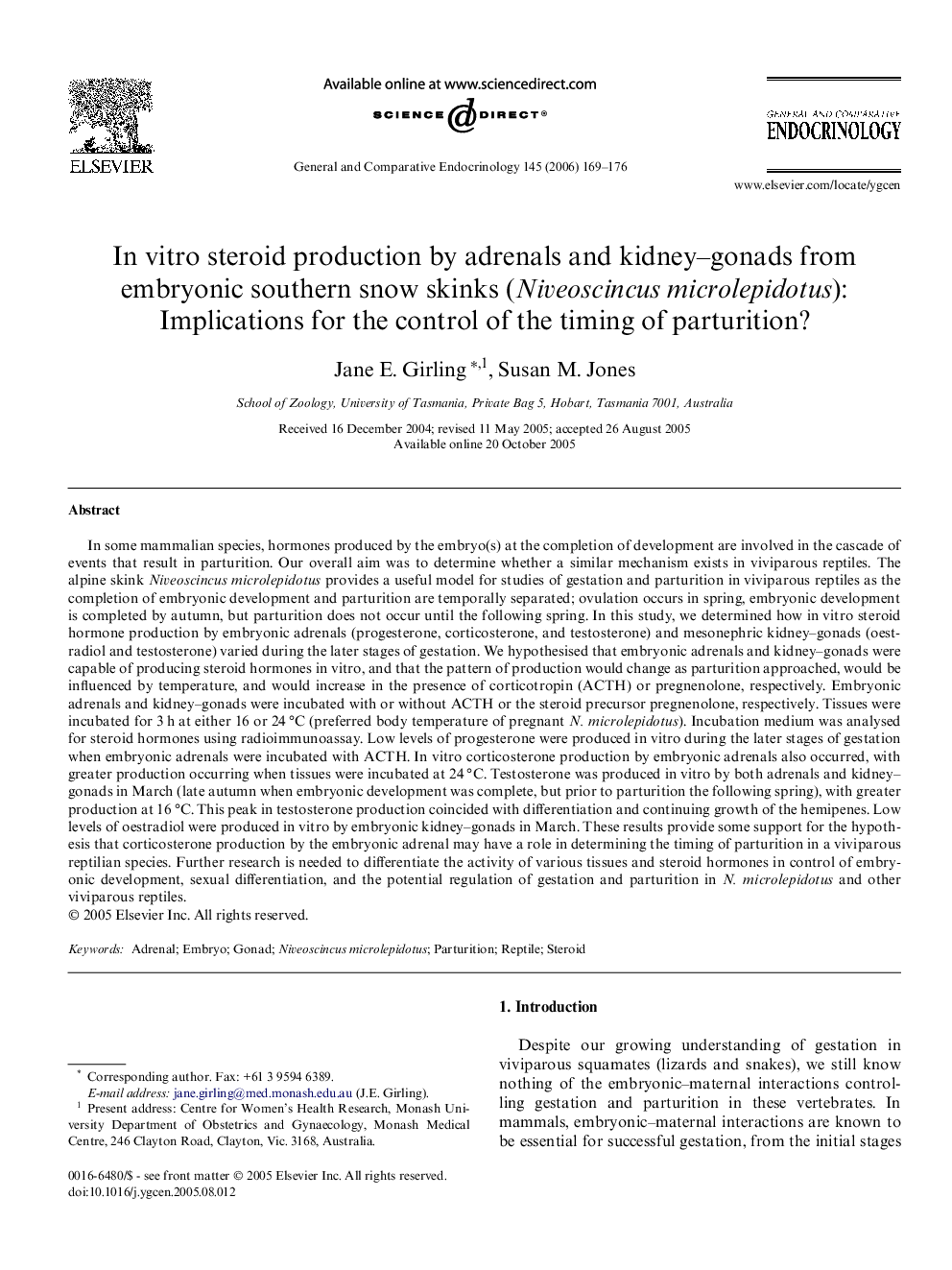| Article ID | Journal | Published Year | Pages | File Type |
|---|---|---|---|---|
| 2802244 | General and Comparative Endocrinology | 2006 | 8 Pages |
In some mammalian species, hormones produced by the embryo(s) at the completion of development are involved in the cascade of events that result in parturition. Our overall aim was to determine whether a similar mechanism exists in viviparous reptiles. The alpine skink Niveoscincus microlepidotus provides a useful model for studies of gestation and parturition in viviparous reptiles as the completion of embryonic development and parturition are temporally separated; ovulation occurs in spring, embryonic development is completed by autumn, but parturition does not occur until the following spring. In this study, we determined how in vitro steroid hormone production by embryonic adrenals (progesterone, corticosterone, and testosterone) and mesonephric kidney–gonads (oestradiol and testosterone) varied during the later stages of gestation. We hypothesised that embryonic adrenals and kidney–gonads were capable of producing steroid hormones in vitro, and that the pattern of production would change as parturition approached, would be influenced by temperature, and would increase in the presence of corticotropin (ACTH) or pregnenolone, respectively. Embryonic adrenals and kidney–gonads were incubated with or without ACTH or the steroid precursor pregnenolone, respectively. Tissues were incubated for 3 h at either 16 or 24 °C (preferred body temperature of pregnant N. microlepidotus). Incubation medium was analysed for steroid hormones using radioimmunoassay. Low levels of progesterone were produced in vitro during the later stages of gestation when embryonic adrenals were incubated with ACTH. In vitro corticosterone production by embryonic adrenals also occurred, with greater production occurring when tissues were incubated at 24 °C. Testosterone was produced in vitro by both adrenals and kidney–gonads in March (late autumn when embryonic development was complete, but prior to parturition the following spring), with greater production at 16 °C. This peak in testosterone production coincided with differentiation and continuing growth of the hemipenes. Low levels of oestradiol were produced in vitro by embryonic kidney–gonads in March. These results provide some support for the hypothesis that corticosterone production by the embryonic adrenal may have a role in determining the timing of parturition in a viviparous reptilian species. Further research is needed to differentiate the activity of various tissues and steroid hormones in control of embryonic development, sexual differentiation, and the potential regulation of gestation and parturition in N. microlepidotus and other viviparous reptiles.
